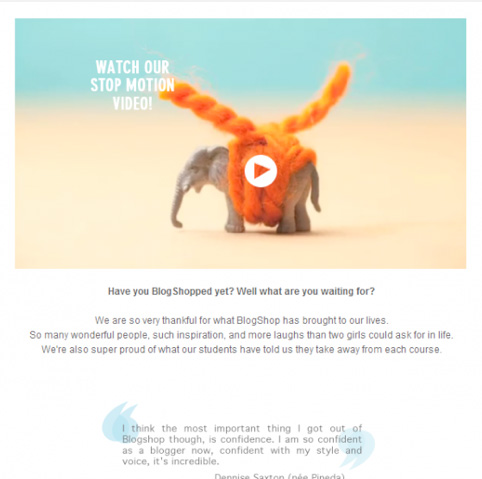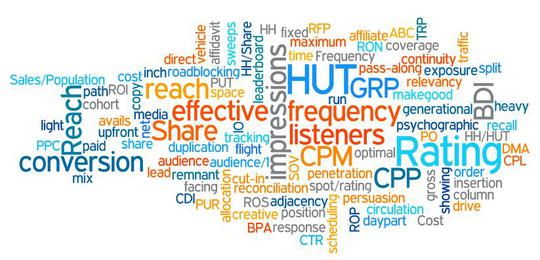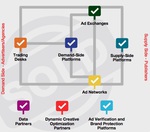
When it comes to online marketing, email is one of the most powerful tools you have. Social media might be the latest sexy medium, but when it comes to generating leads, nurturing customer relationships and providing long-term growth, email is still incredibly effective. It’s easy to use, priced right and it works. Here’s proof:
According to HubSpot’s Jonathan Pavoini, “Even with all of the new marketing technologies and tactics available to us, it’s still the simplest– email marketing–that remains most effective. Research from Experian states that $1 invested in email marketing initiatives still yields a roughly $44.25 return for marketers.”
With the prospect of high returns, lots of marketers are still using email–but there’s a problem: as a consumer, I felt like I was getting too many emails five years ago and that number seems to have exploded since.
And the worst part? This volume increase is inversely proportional to consumers’ busy lives, so they (and I) have less tolerance for these seemingly nonstop emails. To fight back, we increasingly unsubscribe from as many email lists as possible or will have multiple email addresses, with one of those acting as a clearinghouse for items we don’t want to bother with. Where do you think you’re ending up?
I’ll get back to this in a second, but first let’s review the basics:
CAN-SPAM regulations and creating your list
First, you need to understand the CAN-SPAM regulations. CAN-SPAM is an acronym for “Controlling the Assault of Non-Solicited Pornography And Marketing Act of 2003? (there’s definitely a less convoluted way of wording that, but Congress obviously liked the acronym). These are the basic principles:
- Recipients must be able to opt-out of future communications, and if they do, you have 10 business days to take them off your list. Essentially, this means you need to put an “unsubscribe” button on your emails.
- Subject lines can’t be deceptive. Don’t trick people into opening your emails.
- Your postal address needs to be included. You can put it at the bottom in small print, but it has to be there somewhere.
- The email source has to be traceable.
How you create and manage your list matters, too. If people don’t want your newsletter, sending it without their consent will not endear you to them. Ever get email you didn’t sign up for? Ever marked that email as junk? Yeah–that’s what will happen to you if you send emails to people who haven’t signed up for your mailing list. And it doesn’t take many of these “abuse” complaints to put your domain on an ISP’s list and get you blocked as a spammer. Once that happens, getting off an ISP’s list is much, much harder than getting on it.
Service providers
When it comes to service providers for email marketing, you need to really think about the options. Here are ten of the bigger providers; the first five are for larger brands and the others are probably more suitable for small and medium-sized businesses.
Cheetah Mail
Epsilon
SilverPop
Exact-Targe
Responsys
AWeber
Constant Contact
icontact
Mail Chimp
Vertical Response
Ease of use is certainly important, as is available options for campaign creation, but the most important functionalities–hands down–are the campaign reporting capabilities. Knowing who is forwarding your emails to colleagues (always a good sign) and who is clicking your links is key to sub-targeting future campaigns and closing that conversion loop.
And it’s also good to know how many people are opening your emails and NOT clicking. Many marketers are seeing over 50% of their emails opened via mobile, and this is both a good and bad thing. There are fewer options available on your readers’ phones for filtering email (although this is surely likely to catch up soon), which means they see all of their emails, whether they want to or not. They may just be clicking yours to mark it unread, who knows? This further decreases readers’ tolerance for emails they do not want.
So if you’re seeing lots of “opens” but not many taking the next step and clicking your links, you need to step back and re-examine your efforts before the unsubscribes start raining down on you– and they will! This is why a provider offering robust campaign analysis is essential.
Now onto the newsletters:
Your campaign
As with any kind of marketing, you’ll get the best results from your efforts if you target your audience and have a clear understanding of what you want from the campaign. Are you generating leads? Building or maintaining relationships? Whatever your goal, it needs to be defined. And then there are these considerations:
Frequency
This is so very important. You can learn a lot from looking in your own inbox. What emails do you ignore? For you, how often is too often? Does it depend on who the sender is? As a general rule, don’t send anything out that you wouldn’t care to receive.
Watch carefully, and think. Too few emails and you’ll be forgotten about, too many and people will start to hate you. Some senders can put out multiple emails per week, whereas others have audiences who are seeking only one email per month. Know your audience, and be consistent. Tracking your emails and analyzing the results can help you figure out what time, which day, and how often you should be sending your newsletters.
Design
A clean, attractive design is very important. Here are some great email newsletter templates that are bound to kick-start your creativity. Even if you don’t end up using them, they’re worth looking at for inspiration alone. Like this one:

While you’re thinking about the design, make sure you don’t overdo branding. Think about it: the recipient already knows it’s from you. It says so in the “sender” field. Sure, you want to put your logo on the newsletter, but you don’t need to go crazy. You do, however, need to plan it out ahead of time and keep it consistent. You’ll want to include some social sharing widgets, too.
Format
This isn’t something you have to worry about too much, but you still need to be aware. Some email clients — whether that’s software or websites — have trouble reading certain email formats. Most service providers automatically offer the email in plain text or browser-view so that anyone who can’t read the HTML version can just click the link. That way, nobody has to miss out. Most email marketers use HTML, so this isn’t something you should lose sleep over.
Most providers also automatically format your newsletter for mobile, but you should absolutely make sure it comes through cleanly as the lion’s share of your readers will be viewing your newsletter on their phones.
Content
Your content needs to be interesting and get straight to the point, and you should only send a newsletter when you have something of value to say. The first paragraph of the body should cover exactly what the newsletter is about. Anything that comes beneath that should build on what’s already been said. If you want the recipients to read your newsletter, you must grab their attention early and keep them moving along with you. Keep your copy short and punchy, and be relevant (that’s where targeted lists come into play). Don’t worry about keywords landing you in the junk folder; words like “free” and “win” were a problem at one point, but nowadays, it’s all about your sender reputation to ISPs.
Subject line
Your subject line must be brief–under 39 characters, or shorter, if possible. A lot of people are going to read your emails from their smartphones, and smartphones tend to cut the subject line short at 39 characters. Your subject line also needs to be catchy and click-worthy. Don’t forget about CAN-SPAM, though–it also has to be honest.
Analyze results
When you’ve analyzed your results, you can sub-target your list depending on clicks. If certain recipients click on Widget A links, create a Widget A list, and then create specific email campaigns that you send only to those people. Same for Widget B, and so on. This is a step many people miss.
Also, be sure to link to Google Analytics for additional tracking insight. This generally involves creating a new custom metric in the Analytics interface, and putting a line of code in your email so it can be tracked. Check out this post for step-by-step instructions. It’s not that difficult, I promise.
Growing your list
So, everything’s looking good. You know how to avoid spam filters, you’re sub-targeting your lists, and you know how to analyze your results. But how do you get more people to see these fantastic campaigns you’re setting up?
Well, creating branded content that’s valuable to your audience (and offered for free) seems to be the most popular way these days. You’ve probably seen it before–a free giveaway, trial offer or PDF guide offered if you provide your email address–and it is very effective. Just make sure you require a verified email address in exchange for your fabulous item or content (meaning you email the content to those who sign-up, it isn’t offered from your website as an immediate download). Why? Well, I know I’ve entered fake phone numbers on pages, why wouldn’t someone list a fake email address? If you’re going to create an asset, treat it as such.
If you don’t want to offer content for whatever reason, you can still use your website to grow your list. Your website is at the heart of all your online operations (or it should be), and you need to make the most of all its visitors. The sign-up form should be as simple as possible. The fewer fields, the better. Name and email address is a popular combination, and allows you to personalize your communications. However, email address alone is quicker for users to type out, and doesn’t raise the “why do they want my name?” alarm that some people (usually less-experienced net users) seem to get online. And there’s heightened sensitivity around privacy these days, so asking for less identifying information is definitely better.
Videos are good at generating leads, too. Webinars, a series of instructional videos–whatever works for you. Again, you’d do best to offer valuable info up front, with the promise of more once users register with an email address. You don’t want to give everything away for free, but you do want people to believe you have something worth their time. (And then really have something worth their time!) Promoting events to opt-in customers works too, but tends to be overused.
And you can also generate email leads through Facebook. There’s a good guide here, but these are the basics:
- Put an email sign-up form as one of the tabs on your Facebook page.
- Have email-gated content (see link above) available on your page, as well as on your website.
- Offer exclusive deals and discounts to people who sign up to your list. (You have to follow through.)
- Run contests where your fans have to submit their email addresses to enter.
Run contests where your fans have to submit their email addresses to enter.
You can use Twitter to generate leads, too. The lead generation cards launched in 2013 are now open to all users of Twitter Ads, including medium and small business. With one click, anyone who sees your promoted lead-generation Tweet can sign up to your newsletter. When they click, their info is taken from their Twitter profile, and you’ll get their name and email address. If you can afford it, it can be incredibly beneficial.
Incentivizing referrals can work, as well. If you offer a discount to anyone who gets a friend to sign up–and offer a discount to the friend, too–you can grow your list quite successfully. The only trouble with this is relevance. It might require some pretty extensive sub-targeting, unless you offer an incentive that will appeal to everyone. The discount or promotion has to be something you can afford to do on a big scale, though. Not following through will get you nothing beyond a bad reputation, and any new additions to the list will quickly leave it again if you go back on your promise of free stuff.
Work with partners who have lists of consumers who might be interested in your products and services. How does this work in practice? If I run popular finance information website and have a large newsletter and you are launching a new finance offer, I could promote your finance trial offer to my newsletter list.
And finally– and this is very, very important– do not buy a list. It might seem like the easy option, but the risk just isn’t worth it. Here’s why:
- Good lists aren’t for sale. You can’t rent them, either. If you buy a list, you can pretty much guarantee that a hundred other companies have also bought it. By the time it’s your turn, the list will have been rendered completely useless by spam.
- Remember what we were saying earlier, about CAN-SPAM? Yeah. Buy a list and you can say goodbye to your email deliverability. Servers will block you as spam, because like it or not, sending hundreds of unsolicited emails is spamming.
- If people receive emails from you and have no clue who you are, they’re not going to be happy. If they interact with you at all, it’ll be by clicking “unsubscribe”.
If you need more dissuading, here’s a detailed list of all the reasons why buying a list is a really, bad idea. The odds that a bought list will convert into sales are almost nonexistent, and aren’t conversions the whole point of this? If you’re only in it for the ego and want thousands of useless readers (“recipients” would be more accurate, as these people probably won’t even look at your newsletter) then by all means, go ahead!
The main thing to remember: just because someone opted in to an email list does not mean they want unlimited promotional emails.
The future of email marketing
My expectations for personalization have grown, as have yours, no doubt. “Dear Matt” just does not cut it any more. You need to know my name, but also what messages and promotions I am interested in and when I am likely to want them– or risk being labeled “junk.”
Re-targeting (aka “re-marketing”) both onsite and cross-site with CRM enables marketers to more precisely predict user interests and behaviors and communicate with the right messages at the right times. Combine that with your campaigns and you have a winning strategy!
But even without retargeting, email is still the most effective form of customer acquisition and activation, in my experience.
Have you successfully (or unsuccessfully) marketed via email? Anything I’ve missed? Leave your comments below.
This contributed article, written by Adknowledge GM Matt Hoggatt, was originally published on the Adknowledge blog.




















